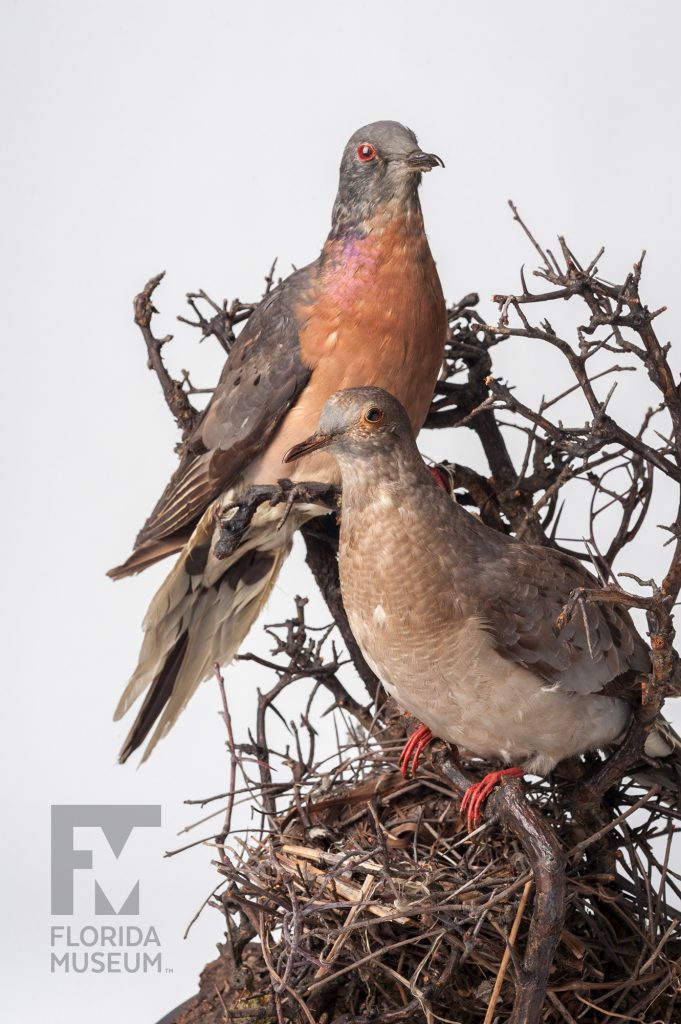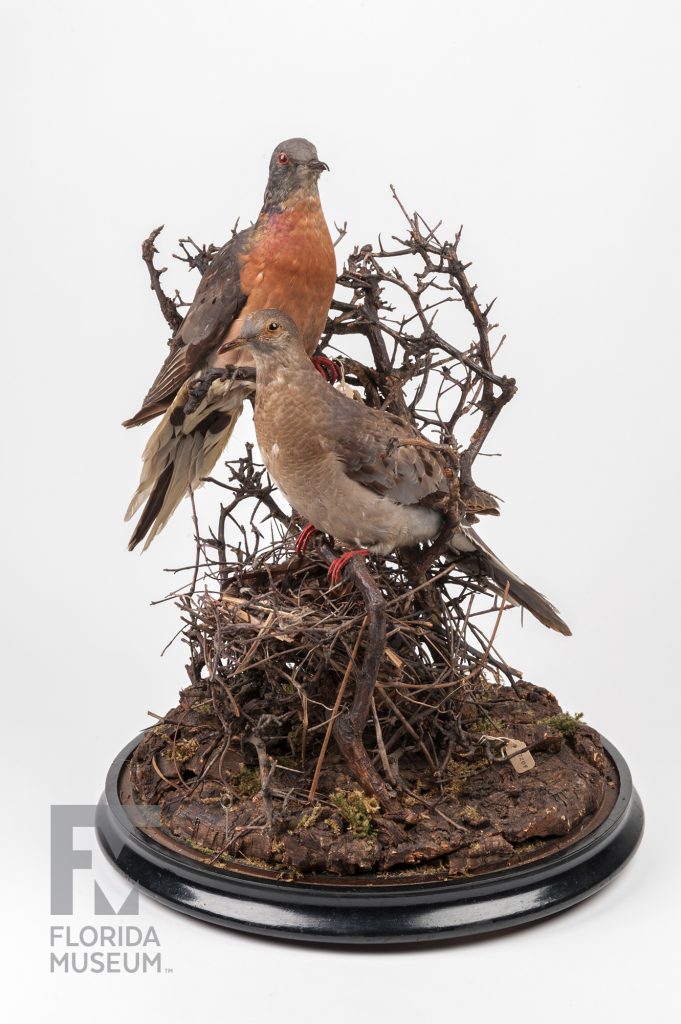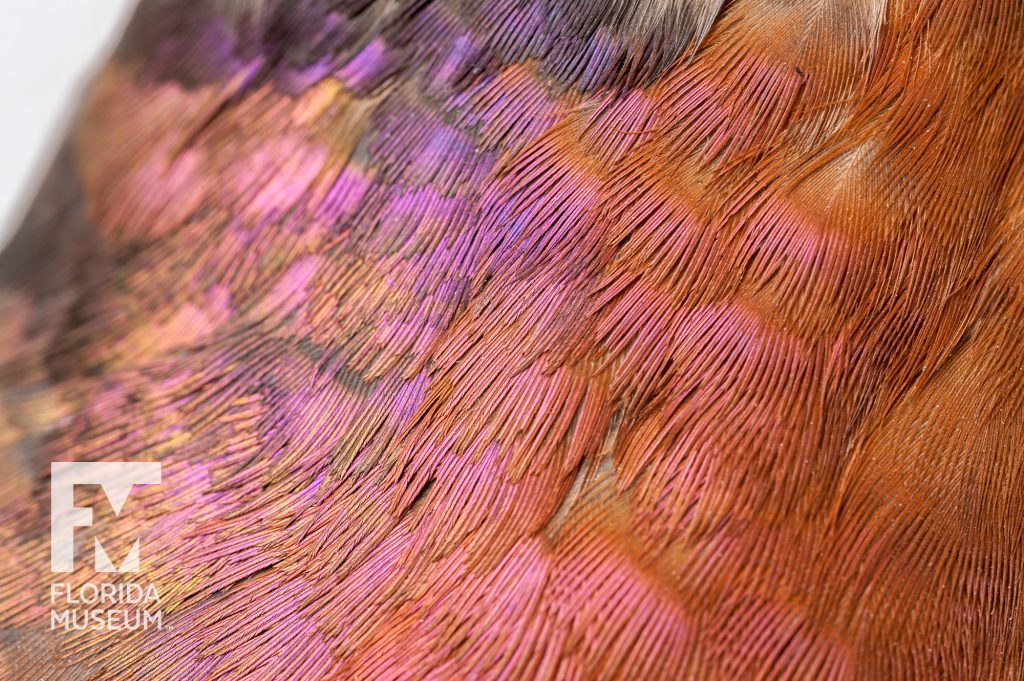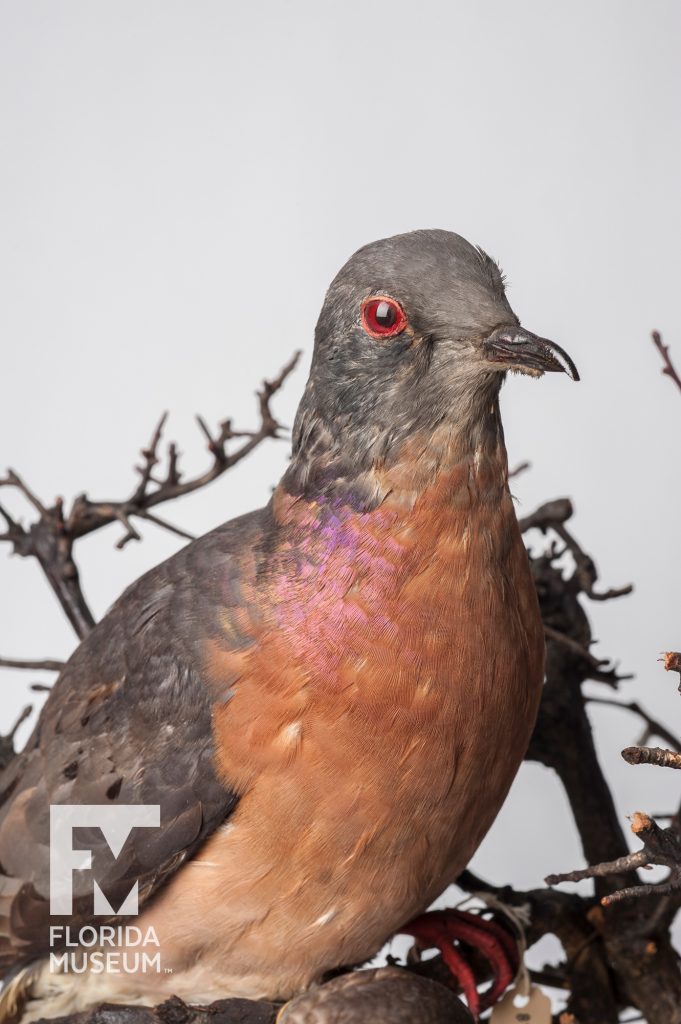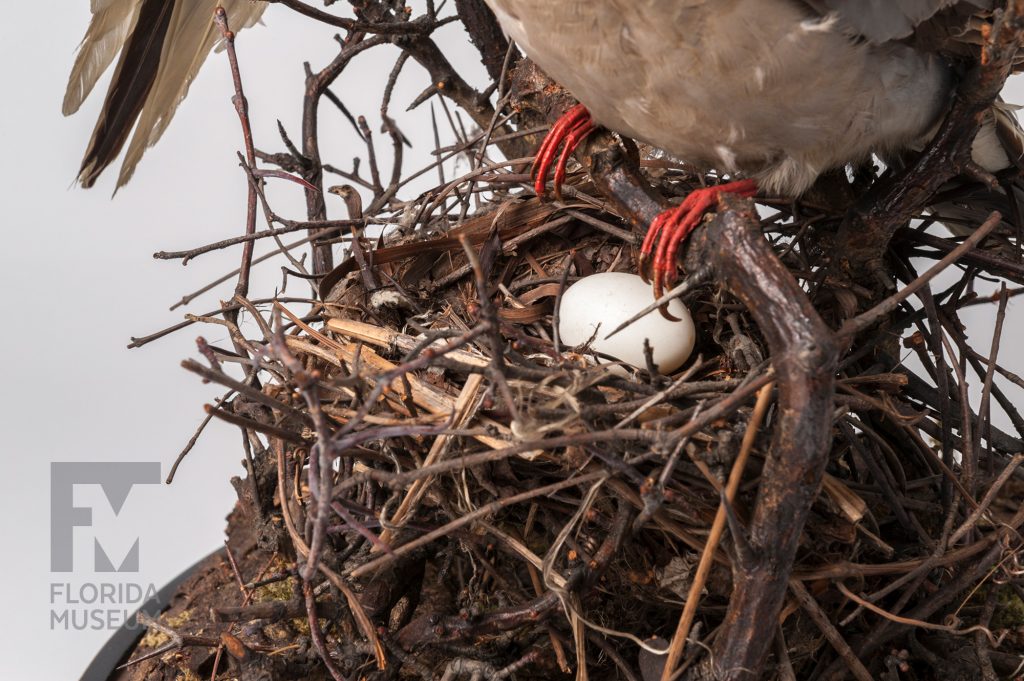Passenger Pigeons were one of the most abundant birds in the world, with total numbers estimated at 3-5 billion. Hunting and loss of their forest breeding sites caused sharp population declines by the late 19th century. The last surviving pigeon died in captivity in 1914.
Summary
Passenger Pigeon (Ectopistes migratorius)
Collected information unknown
Collection
Story
So here we have a nice mounted pair, a male and female, of the extinct Passenger Pigeon. We don’t know the exact place where these birds were collected, but it was probably in the 1880s or 1890s.
The Passenger Pigeon is maybe the most dramatic extinction story that we have in North America. As late as the 1870s it was the most abundant bird in North America. It nested colonially in the northeastern deciduous forest. Nesting colonies were measured in square miles, sometimes tens of square miles. Estimates included up to billions of Pigeons in a single nesting colony. They ate nut crops like beechnuts, acorns, hickory nuts – hyperabundant bird. And we know from the archaeological record that that hyperabundance extended way back into time, way before colonization of North America by Europeans and Africans.
But a couple things happened that spelled doom for Passenger Pigeons. Maybe the single most important thing was the development of railroads in the 1860s, ‘70s and ‘80s, that for the first time linked the big cities on the Eastern Seaboard – Boston, New York, Philadelphia, Washington – with the wilder parts of the country such as Western Pennsylvania, Ohio, Illinois. What that railroad connection did – there were two things – one was, it led to massive deforestation – so these huge tracts of forest were being cut – ruining the habitat of the Passenger Pigeon. And then the other thing is, market hunters would hunt the Passenger Pigeons in huge numbers and pack the breasts of these pigeons – they only saved the breasts – they’d pack’em in salt barrels and they could get them to the major cities in the East within a day or two packed in this salty brine. There’s a very interesting account from a railroad guy – he ran the station in Sheffield, Pennsylvania – and in September of 1876 he counted 770,000 Passenger Pigeon breasts packed in barrels and then he gave up. He said, “All I know is I’m packing more than a million to go back to New York.”
So market hunting, deforestation – and by the time people realized the Pigeon was getting rare in the 1890s – in essence it was almost too late because the social behavior of these Pigeons required they nest in big colonies. People were still hunting them and a group of merely, say a thousand or 10,000 Passenger Pigeons didn’t set up their nesting colonies properly. They needed to be in huge numbers – they couldn’t adapt quickly enough – and the last Passenger Pigeon was the famous “Martha” who died in 1914 in the Cincinnati Zoo.
David Steadman
Curator, Ornithology*
Florida Museum of Natural History
Exhibit
On display Sept. 23, 2017-Jan. 7, 2018, Rare, Beautiful & Fascinating: 100 Years @FloridaMuseum celebrated the Museum’s rich history. Each Museum collection was asked to contribute its most interesting items and share the stories that make them special. Though the physical exhibit is closed, this companion website remains online, providing an opportunity to experience the Florida Museum’s most treasured specimens.
Exhibit Area: Extinction
Theme: Extinct Birds
 Want to see more? Explore more than 300 breathtaking color photos of plants, animals, fossils and cultural heritage materials from the Florida Museum of Natural History’s collections in the award-winning book All Things Beautiful available from the University Press of Florida.
Want to see more? Explore more than 300 breathtaking color photos of plants, animals, fossils and cultural heritage materials from the Florida Museum of Natural History’s collections in the award-winning book All Things Beautiful available from the University Press of Florida.
*This title was accurate at the time the exhibit was on display in 2017. Please visit the collection website to verify current staff and student information.
